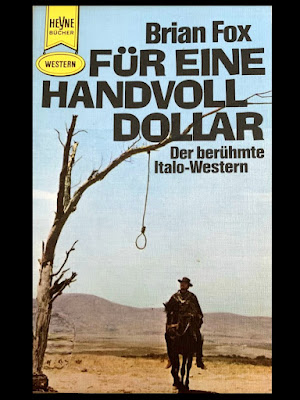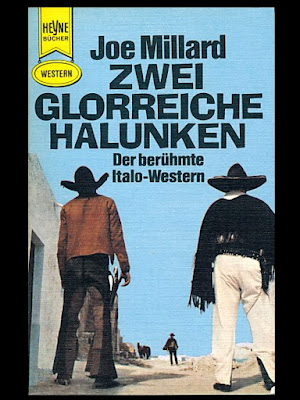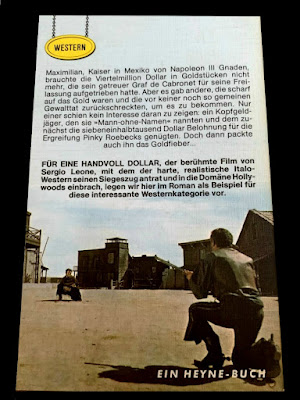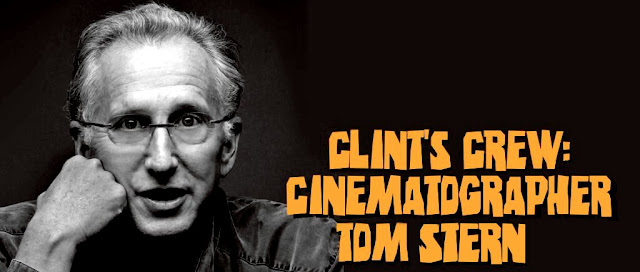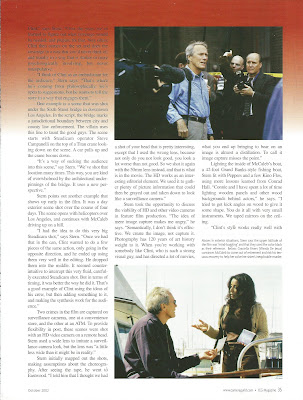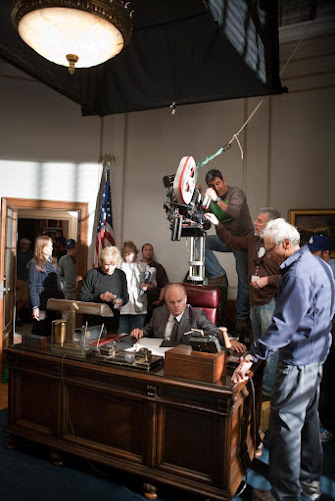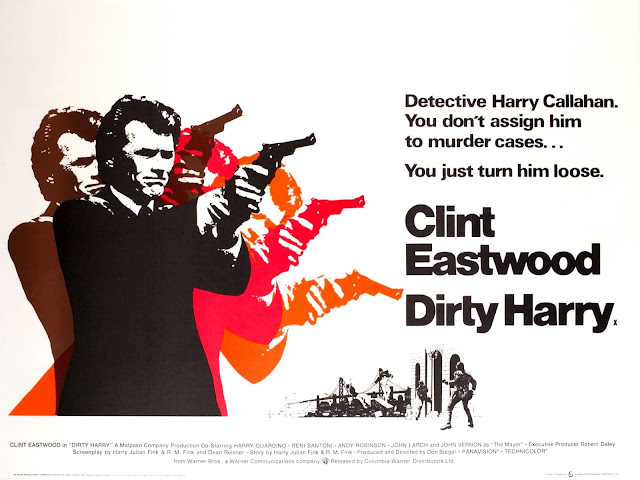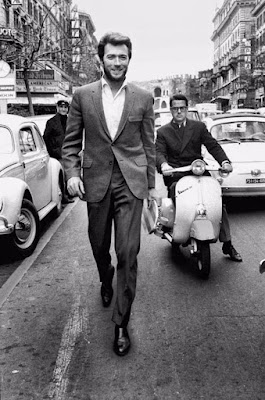Tom Stern, ASC, AFC, on Shooting the Clint Eastwood Way, By Bryant Frazer / April 15, 2015
Advice from Robert Surtees, Working Quickly but Carefully, and Not Dwelling on Your Films

A highlight of this week's NAB Conference was an appearance by cinematographer Tom Stern, ASC, AFC, who was interviewed on stage by ICG Magazine Executive Editor David Geffner. Stern first worked with Clint Eastwood in 1982, as a gaffer on the director's Honkytonk Man, and graduated to DP on the director's 2002 film, Blood Work. Their most recent collaboration was last year's box-office smash and Oscar nominee American Sniper. Responding to questions from Geffner and the audience, Stern offered some glimpses into his own thought process — and some insight into Eastwood's working methods.
Early in the discussion, Stern remembered working with the legendary DP Conrad Hall, ASC (on American Beauty and Road to Perdition). He also remembered Honkytonk Man cinematographer Bruce Surtrees, who would sometimes take advice from his father, Robert Surtees, ASC. When a lighting setup wasn't working, the elder Surtees advised dropping the set into complete darkness, then turning on one light. When the one light is doing exactly what you want it to do, Surtees told his son, then you may continue. "Oftentimes, I normally follow Robert Surtees' advice of starting out with one light," Stern said. "And a lot of times, that is enough."

Eastwood is known for working quickly, and Stern says that's partly because he's not fussy about capturing variations on performances. "A lot of the time we'll shoot the rehearsal," he said, "and a lot of times we'll put the rehearsal [in the film]. 30 to 40 percent of shots in any film, there was one take and that's the take you're looking at." Despite the fast pace, he noted, the results generally speak for themselves. "Letters from Iwo Jima is 33 days to a Best Picture nomination, which is a terrible thing for a DP to admit, because we get paid by the week." Asked about color grading, Stern says he never "gets too fancy" with a film negative or digital intermediate, but he notes that it was digital timing that gave Letters from Iwo Jima its distinctive, nearly monochromatic look. "If you were to do a contact print of Letters from Iwo Jima, it would look like The Sound of Music. It's a really fat negative, so it should last a long time." Moreover, trust between Stern and Eastwood is so strong that the director does not sit in on Stern's DI sessions.
But that doesn't mean Stern does whatever he likes. He knows that he's taking marching orders from his collaborators. "Before I use a filter, there is a discussion with Clint and his editor, who is a huge filterphobe," he says. "We never use any filtration." What makes Stern so easy-going when it comes to agreeing to the kind of restrictions that would make prima donna DPs bristle? "I'm painting on a $40 million canvas," he says, "and the $40 million isn't mine."
Responding to a question from the audience about whether Eastwood, an actor himself, puts actors in the position of greatest importance on set, he cracked, to a huge gale of laughter, "Categorically, after having worked with him for over 38 years, he's never given a shit about my problems."
Stern said last year's American Sniper was Eastwood's second film shot with the Alexa. "He loves the fact that we can shoot 27 minutes on Codex," Stern said. "He likes not having the [film] magazine changes, mainly."
What else contributed to Eastwood's digital transition? "It's getting harder to get camera negative," Stern said. "We were shooting with the Alexa with Panavision anamorphic lenses [capturing] full-frame ARRIRAW, while the film thing was getting less stable. We had been using Fujifilm for a while, and Fuji quit. Film was getting less robust, and digital was getting more robust."
An audience member who was an extra in Eastwood's 2008 film Changeling remembered hearing the director growl quietly on set, "You mean that shadow will keep me out of Sundance?" and asked what that comment was about. Stern said it was part of a long-running joke about Eastwood's complete indifference to festival plaudits and the like. "He's not making films to win awards. He's making them to express his point of view, and for the audience to engage with," Stern said.
Asked which shots from films he has shot make him most proud, he responded, only half-joking, "Every movie I've done is a failure." By way of explanation, he remembered a time when Conrad Hall was suicidally depressed over American Beauty, which Hall apparently thought had turned out poorly. (It went on to win Oscars for Best Picture and Best Cinematography.) But he did say that he doesn't dwell on his own work, claiming that after finishing the DI, he hits "reboot."
"Normally," he said, "I'll never see the film again."
LIGHTING FOR HISTORY: TOM STERN, ASC, AFC SHOOTS J. EDGAR – from Panavision.com
Cinematographer Tom Stern grew up in Palo Alto, California, but spent part of his teenage years in France, where he began experimenting with photography. He attended college at St. Johns in Santa Fe, New Mexico, graduating with a liberal arts degree. He continued at Stanford University, where he concentrated on film studies and honed his camera skills by shooting several student films.
After college, he began his career as a gaffer, working on educational films and documentaries in the 1970s. He worked on highly-regarded independent features including Sam Fuller’s “White Dog” (1982), which was where he met cinematographer Bruce Surtees. Bruce was Clint Eastwood’s main cinematographer at the time, and he hired Tom as gaffer on “Honkytonk Man.” Tom would go on to work with Clint and Bruce as gaffer or chief lighting technician from the 1980s until “Space Cowboys” in 2000. In 1999, Tom worked with Conrad Hall on “American Beauty” as chief lighting technician, and paired again with him in 2002 on “Road to Perdition.” Conrad was a mentor and very close friend, so much so that when he passed away in 2003, Tom contemplated retirement from the entertainment industry. That was when Clint Eastwood called, and hired him as the cinematographer on “Bloodwork.” Tom has since worked as Clint’s main cinematographer on films such as “Mystic River,” for which he received a Golden Frog nomination from Camerimage and a Golden Satellite Award; “Million Dollar Baby;” the intertwined pair of films “Flags of Our Fathers” (which garnered him a Satellite Award) and “Letters from Iwo Jima,” (nominated for a Chicago Film Critics Award); “The Changeling,” for which he earned his first Oscar and BAFTA nominations as well as a Satellite nomination; and “Gran Torino. More recent films include “Invictus,” “Hereafter” and the most recently released “J. Edgar” under Clint’s direction. Tom is a member of the American Society of Cinematographers, as well as the Association of French Cinematographers and currently resides in France with his wife.
Q: When and where were you when you were first introduced to Panavision?
TS: It was with Robbie Greenberg when Mr. Gottschalk was still alive. I was a gaffer and I was invited over to the sanctuary of cinema, Panavision, which was a big deal. We had known each other from the Bay area and he was about to do a feature. It was in the 70s, in LA, and something happened and he needed a gaffer, so I drove down to LA from Palo Alto.
Q: What was your first project you used Panavision on?
TS: It was “Blood work,” directed by Clint Eastwood.
Q: What was it that influenced your decision to become a cinematographer?
TS: Clint more or less said that I would be a chicken and a coward if I didn’t accept his generous proposal to shoot his film. I was pushed into it, and I am glad I was.
Q: You had been a successful gaffer for many years on major features, why did you transition into the role of cinematographer?
TS: I had not been thinking about becoming a cinematographer; in fact, I had been thinking about retiring. Connie Hall had passed away after “Road to Perdition,” which I gaffed. I had a lovely house in France, and I thought maybe this is time to do something else. Then Clint called with the “something else.” The problem with being a cameraman, especially if you’re like me and don’t know anything, is that it costs a lot! It’s $10,000 to get in to the union, and then $10,000 to get in the ASC, and when I was nominated for an Oscar and a BAFTA and a French Cesar all in the same year, it cost me about $12,000 in outfits…because I found out that the lady doesn’t wear the same dress twice to all these awards!
Q: How long have you been using the same crew in terms of gaffer, key grip, operator and assistant?
TS: I’m a great fan of globalism. As a result, I really go out of my way to work all around the world on all sorts of different projects; so I have people I work with in France, Russia, Japan, Western Canada, Eastern Canada, everywhere. Depending on the project I will take one or more of the key crew. I am always described as Clint’s cameraman -- which kind of makes me feel like a beagle! -- so to gain my foothold as a cameraman (especially since I don’t have formal training in cinematography), I try to get as much experience as I can with different people. I usually shoot a Clint Eastwood film, then a film with someone else, and alternate. But, I have worked all around the world with Panavision -- London, Paris, everywhere.
Q: What is your decision-making process between shooting spherical or anamorphic?
TS: I shoot mostly anamorphic. Someone came up to me at Camerimage with a box of DVDs, and said, “You know, you’re the king of anamorphic,” and my wife said, “You’re not the king of anything.” He told me that in his research he found that I’ve shot more anamorphic films that a lot of DPs. I will always tend to shoot anamorphic unless there is a lot of need for long lenses or macro lenses; there are certain areas in anamorphic that I am just not comfortable with. I tend never to use zoom lenses anyway; I’m kind of a boring anamorphic guy. Because I’m a gaffer, lighting comes easy to me, and I end up going with the C series. Dan Sasaki has been incredibly supportive over the years with these lenses. I must have shot 12-14 films with the C Series. Clint has this motto: “If it ain’t broke, don’t fix it,” and there is something to be said for it.
Q: How much of that decision is related to your artistic take on the script vs. that of the director?
TS: I’m a huge believer in consensus and I would rather have consensus than win an argument. We always discuss it, and with Clint we mainly work in that format, 2:35, and to me it’s a very natural thing to do. I don’t have a problem if it’s a drama and we do 1:85 or it’s more invasive and then it is 2:35. The only downside for me is the macros and the long lens. With “Hunger Games,” which I just shot, we used tele-extenders on 400m lenses -- I would have hated to do that in anamorphic.
Q: The film you shot, “J. Edgar,” was shot in anamorphic. Do you find that with the increasing use of digital, it is easier, or harder, to shoot widescreen format?
TS: The bizarre thing about the whole widescreen format is that I have met more producers who are freaked out because of anamorphic. With the way we light it, using the C lenses, I don’t understand what the discussion is, because there is absolutely no difference for me. I just tell them it’s not going to be any more expensive, and I’m in this space where we do pretty good movies and we shoot them fast, so nobody is worried about me being slow or going over budget. I think that is why it has worked out so well; we’ve had discussions but it’s never been a problem.
Q: “J. Edgar” is based on history. Did you do a lot of research?
TS: Yes. I love to read, and if my wife was here she would say the dresses cost a lot less than the books I buy each year. They gave me a big whack of stuff to read, and they know I like to read, because I’m on planes a lot. The screenplay is such that it’s interchanged between different time periods, and we wanted to make sure the audience had a good idea of the time periods. You don’t want the audience to have to exert energy and be distracted by what time period the characters are in. I used the lighting as cues: there is a look for when he is a child, when he is a young man, and then a look for the later years.
Q: When shooting “J. Edgar” what can you tell us about how you designed your lighting to photograph key actors?
TS: You know, what’s weird is that Clint is a huge aficionado of improvisation, like you might have in jazz, and he’s been a huge enabler for me in that he allows me to let it flow. The interesting thing about cinematography is that the art is part of a huge technology infrastructure, and it’s easy to be weighted down by that. What I do is try to make it as light as possible; it’s why we use the C-series lenses and Panavision, because everything is pretty stable, and it’s important for how the actors are acting and how they move through space. I’ve always been amazed when I see those lighting plots in “American Cinematographer;” I love reading them and looking at them, but I have never done one. I’m actually probably dangerous because I’ve been formed by Clint Eastwood and Conrad Hall; Connie was always looking for serendipity, that “happy accident.” The only way you can have that is probably in the middle of a set burning down, but for me it works better if everything is stable and as simple as possible, so you can find the serendipity. I let Leo move through the set, and when Leo moves through the set and starts to feel it, I can adapt almost instantly in a way that nobody perceives what’s going on. We do it simply and I have a very good crew. Leo came up to me at the end of the shoot (it was 39 days) and he said, “Thank you so much. I didn’t think this was possible but you guys are so respectful and unobtrusive and efficient. I want to thank you because you just let me do what I do.” To me, it was amazing every day to watch him; the work he did in that film was absolutely remarkable.
Q: You have worked with Clint Eastwood on several projects now, including “Mystic River,” “Million Dollar Baby,” “Changeling” and “Gran Torino.” How did your relationship evolve with Clint Eastwood?
TS: We actually started working together on “Honkytonk Man,” which Bruce Surtees shot, and he runs a very flat management hierarchy, so we got to know each other pretty well. I think that he had some innate kind of confidence in me to offer me that position. When we did “Blood work” I was really nervous, because I’m supposed to be shooting this movie and there is no reason I should be shooting a movie! The first week I was really flipped out, so what I did -- which I thought was very off-putting -- was to not visit with anyone that first week and allow the film to talk to me on a gut level. When the actors start to work with the director, there is a whole resonance, and I found that at the end of the first week I knew what the movie was going to be visually, for me, in terms of light and camera movement. So now, I talk to the first AD and try to get a lot of latitude in that first week. The first week defines the picture, but it’s pretty subtle, and it gives me a confidence in the understanding of how I see the film at a gut level.
Q: Out of all the projects that you have shot, what was your favorite? And why?
TS: How can I answer that? They are like my children! But if I had to pick one, “Letters from Iwo Jima” would be it. I think working with a Japanese cast was great (it was shot in English and Japanese) and since there were a lot of translators we were working to communicate with each other on a gut level. On that film, we accomplished a tremendous amount and told a great story in very little time. It was a great achievement for everybody involved.
‘Sully’ Cinematographer Reveals How Clint Eastwood Landed a Plane in the Hudson River
Tom Stern's cinematography included location work in New York that combined with footage shot at Universal Studios. BY CAROLYN GIARDINA, The Hollywood Reporter, SEPTEMBER 9, 2016
How to film an authentic version of the “Miracle on the Hudson” — the Jan. 15, 2009 event when Captain Chesley “Sully” Sullenberger guided his disabled Airbus into New York’s Hudson River, saving all 155 lives on board?
Clint Eastwood, working with his longtime cinematographer, Tom Stern, considered various ways of recreating the landing and rescue effort for their new film Sully, which opens today.
“Initially there was a thought to put a wing in the Hudson, but then the Hollywood guys had a meeting with a N.Y. tugboat captain, who said ‘well you could do that but it will rip right off.’ It turns out there’s a 5-knot tide that blows in the river. Anything you stick in the river is going to take off,” Stern reveals.
“So we used ferryboats and created an empty void where the plane would be composited,” he says. “We shot mid-Hudson for three or four days. It was lightly overcast, and we were fortunate because that was what it was like [when the event occurred].”
The rescue itself was then filmed back in Hollywood. Images shot on the Hudson were combined with footage of an actual airplane — the production bought two retired Airbus A320s that were used as sets — that was set down in Falls Lake, the artificial lake on the Universal Studios lot that was first created in 1926 for a production of Uncle Tom’s Cabin. The plane “was dragged up on a flatbed trailer,” Stern recounts, adding that it were then placed in the water on a 350-ton gimbal.
(The visual effects, combining the two locations, were led by VFX supervisor Michael Owens and lead VFX house MPC).
The only problem was the California light didn’t match the look of what had been captured back East. So the airplane was put under a large silk that was hung from a construction crane. “For the lighting itself,” says Stern. “We built a harness that hung above the airplane, with light coming in the windows for the interiors, but they had to be soft lights.”
With an Imax release in mind, Stern — an Oscar nominee for Eastwood’s Changling — chose to use a model of the new large-format Arri Alexa 65 digital cinematography camera that was developed with additional software from Imax, via an Arri/Imax partnership. And he put the camera through its paces, taking advantage of New York locations that included The George Washington Bridge, Pier 81 near the Intrepid and La Guardia Airport.
Stern gave the Arri/Imax camera system high marks, saying it was a “very positive” production experience.
Adding to the authenticity, Captain Vincent Peter Lombardi, who had commanded the Thomas Jefferson ferryboat during the actual incident, plays himself. And Officer Michael Delaney and Detective Robert Rodriquez, both of the NYPD SCUBA Air/Sea Rescue Unit, contributed stunt work by jumping out of a helicopter as they would in a real emergency.
Despite the more challenging aspects of the production, Stern emphasized that Eastwood’s focus was always on character and performance. “His sets are famously quiet. He obviously has a lot of experience as an actor and he knows what bothers actors. We respond [by making sure] we don’t distract them,” he says. “The joke is ‘one-take Clint,’ but he does as many takes as he feels is necessary, though he tends to like the spontaneity of early takes. I understand this. In real time the honest reaction is sorting out [a situation].
“Clint also gets lit up about people second-guessing people — that’s the difference between the spectator and the participant. And he’s always embraced the participants. That’s probably what drew him to this material.”


